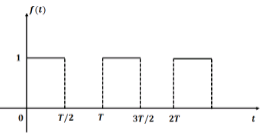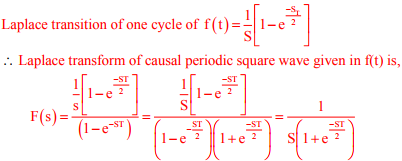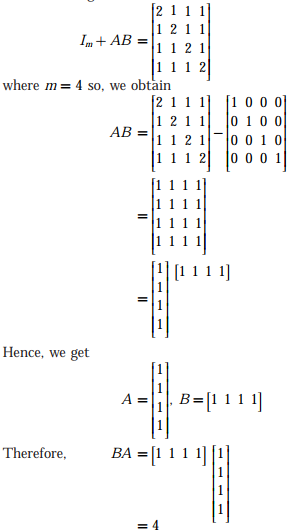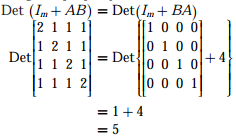Engineering Mathematics - Online Test
Q1. Consider the plot of f(x) versus x as shown below.


Suppose  Which one of the following is a graph of F(x)?
Which one of the following is a graph of F(x)?
 Which one of the following is a graph of F(x)?
Which one of the following is a graph of F(x)?
Answer : Option C
Explaination / Solution:
Since the integration of an odd function is even in this logic A and B cannot be the answer as they are odd functions.
However both C and D are even functions but the integration of a linear curve has to be parabolic in nature and it cannot be a constant function. Based on this Option C is correct.
Q2. Consider a two-port network with the transmission matrix:  If the network is
reciprocal, then
If the network is
reciprocal, then
 If the network is
reciprocal, then
If the network is
reciprocal, then
Answer : Option D
Explaination / Solution:
No Explaination.
Q3. The Laplace transform of the causal periodic square wave of period T shown in the figure
below is 

Answer : Option B
Explaination / Solution:


Q4. Let U and V be two independent zero mean Gaussain random variables of variances 1/4 and 1/9 respectively. The probability  is
is
 is
is
Answer : Option B
Explaination / Solution:
No Explaination.
Q5. Let A be an m × n matrix and B an n × m matrix. It is given that determinant (Im + AB) = determinant (In + BA), where Ik is the k × k identity
matrix. Using the above property, the determinant of the matrix given below is


Answer : Option B
Explaination / Solution:
Consider the given matrix be



From the given property

Q6. A system described by the differential equation  Let
x(t) be a rectangular pulse given by
Let
x(t) be a rectangular pulse given by

 Let
x(t) be a rectangular pulse given by
Let
x(t) be a rectangular pulse given by
Assuming that y(0) = 0 and dy/dt = 0 at t = 0, the Laplace transform of y(t) is
Answer : Option B
Explaination / Solution:
No Explaination.
Q7. A system described by a linear, constant coefficient, ordinary, first order
differential equation has an exact solution given by y(t) for t > 0, when the
forcing function is x(t) and the initial condition is y(0). If one wishes to modify
the system so that the solution becomes -2y(t) for t > 0, we need to
Answer : Option D
Explaination / Solution:
No Explaination.
Q8. Consider two identically distributed zero-mean random variables U and V. Let the cumulative distribution functions of U and 2V be F(x) and G(x) respectively. Then, for all values of x
Answer : Option C
Explaination / Solution:
No Explaination.
Q9. Which one of the following is NOT necessarily a property of a Group?
Answer : Option A
Explaination / Solution:
No Explaination.
Q10. Consider the binary relation R = {(x, y), (x, z), (z, x), (z, y)} on the set {x, y, z}. Which one the following is TRUE?
Answer : Option D
Explaination / Solution:
No Explaination.
